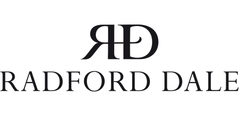732 products
- Red Wine
- Cinsault, Grenache, Syrah, Tinta Barroca
- Sustainable
- Dry
- Residual Sugar: 4.00 g/l
- Full Bodied
- 750ml
- 14.00% alc./vol
About the Winery
Mullineux & Leeu Family Wines

Mullineux Family Wines, established in 2007 in the Swartland region of South Africa, is owned and managed by Chris and Andrea Mullineux. Since its inception the winery has established itself as one of South Africa’s most celebrated wine brands, both locally and internationally. Originally from Northern California, Winemaker Andrea Mullineux studied Viticulture and Oenology at UC-Davis before working in Stellenbosch and meeting Chris at a wine festival in Champagne. Chris is the Viticulturist in charge of the vineyards on their farm on Kasteelberg Mountain as well as fruit sourcing for their value Kloof Street wines.
The vineyards at Roundstone are farmed organically and are in the process of becoming Regenerative Organic certified. This involves practices like crop rotation, no-till farming, and eliminating chemical pesticides and fertilizers. These methods help rehabilitate soil, promote animal welfare, and improve farmers' livelihoods while sequestering carbon and producing healthier yields. In the winery, no additives are used aside from minimal sulfur dioxide, and all operations are IPW certified, following environmental best practices. Waste, including grape skins and lees, is recycled or repurposed, and cellar effluent is processed through an eco-friendly wetland system.
Press Reviews
South Africa Special Report 2024
93 Points- Tim Atkin
'Almost too good,' mused Chris Mullineux when he poured this wine and I know what he means. Combining Syrah, 30% Grenache, 17% Tinta Barocca and 10% Cinsault, it massively over-delivers at its price point, with perfumed 30% whole bunches, bramble, red cherry and white pepper flavours and some granitic grip and freshness. Almost impossible to beat at the price. Drink date: 2024-2029. Best Value Red of the Year.
- Red Wine
- Tempranillo
- Sustainable
- Dry
- Residual Sugar: 1.1 g/l
- 750ml
- 14.3% alc./vol
About the Winery
Bideona

Bideona owns or manages over 300 parcels of extraordinary vines in villages throughout the Rioja Alavesa, the coolest, smallest and most Atlantic sub-zone of Spain’s most famous wine region.
The vineyards of the Rioja Alavesa are defined by parcels of old bush vines planted on terraces or hillside slopes with a high percentage of limestone. Located in the foothills of the Sierra Cantabria, Bideona’s vines have an average age of 50 years and many were planted in the 1920s, 30s and 40s, before high-yielding clones became available.
Bideona puts the focus firmly on terroir by making each wine in its Vino de Pueblo range as a field blend of Tempranillo and other native varieties from plots in an individual village. Each is named with an acronym – L3Z4 for Leza, L4GD4 for Laguardia, S4MG0 for Samaniego and V1BN4 for Villabuena – owing to DOCa Rioja regulations that only allow village names to be marked if both the winery and the vineyard are in the same location.
“Bideona’s reason for existence is to make wines that show the personality of the Rioja Alavesa and its historic wine villages” states company co-founder and director, Andreas Kubach MW. “We have access to a wealth of diverse plant material in our parcels of old vines, which we believe contributes to the complexity of the wines as well as the differences between villages.”
Press Reviews
Wine Align
95 points - John Szabo, MS
From several high elevation parcels in the village of Samaniego, the youngest of which was 50 years in 2020, and the oldest 90 years, this is stunningly perfumed and elegant Rioja. Aromas and flavours feature sour cherry and wild resinous herbs, fresh rose petal, red currant and orange peel, while the palate is taut and tight, resting on riveting acids and fine but still grainy tannins. It seems to be moving slowly and needs another 2-3 years minimum I'd say to enter a primary drinking window. It will be an absolute beauty. Tasted December 2024.
92 points - Michael Godel
More crunch and savour than both the L4GD4 and V1BN4 and while not possessive of the same level of profound quality as both those wines this does deliver fineness in its own right. A reminder how this and its siblings are neither of Reserva or Gran Reserva distinctions but instead a look at viñedos singulares, newest of the Rioja categories. S4MG0 (Samaniego) hails from the higher slopes of a paraje (spot) at Samaniego and the herbal, think minty cool exhale from the tempranillo is so different than what comes out of the other Viños de Pueblo wines. Nearly evergreen as the finish and a delight with good weight, all parts coming together at the finish. Drink 2024-2028. Tasted December 2024.
93 points - David Lawrason
Bideona was formed in 2018, selecting from over 300 small, old vine parcels in Rioja Alavesa. This is from old vines at the highest altitude near the village of Samaniego. Despite the colour depth and 14.5% alcohol there is a lightness of being here as a result. The nose shows blackberry, subtle minty herbs and spice. It is medium weight, fairly supple and warming. Quite dusty tannins here. The length is excellent. My favourite of four bottlings tasted side by side in December 2024
- Red Wine
- Tempranillo
- Dry
- Residual Sugar: 1.2 g/l
- 750ml
- 14% alc./vol
About the Winery
Bideona

Bideona owns or manages over 300 parcels of extraordinary vines in villages throughout the Rioja Alavesa, the coolest, smallest and most Atlantic sub-zone of Spain’s most famous wine region.
The vineyards of the Rioja Alavesa are defined by parcels of old bush vines planted on terraces or hillside slopes with a high percentage of limestone. Located in the foothills of the Sierra Cantabria, Bideona’s vines have an average age of 50 years and many were planted in the 1920s, 30s and 40s, before high-yielding clones became available.
Bideona puts the focus firmly on terroir by making each wine in its Vino de Pueblo range as a field blend of Tempranillo and other native varieties from plots in an individual village. Each is named with an acronym – L3Z4 for Leza, L4GD4 for Laguardia, S4MG0 for Samaniego and V1BN4 for Villabuena – owing to DOCa Rioja regulations that only allow village names to be marked if both the winery and the vineyard are in the same location.
“Bideona’s reason for existence is to make wines that show the personality of the Rioja Alavesa and its historic wine villages” states company co-founder and director, Andreas Kubach MW. “We have access to a wealth of diverse plant material in our parcels of old vines, which we believe contributes to the complexity of the wines as well as the differences between villages.”
Press Reviews
Wine Align
92 points - Michael Godel
Nine months has done nothing to diminish the energy and swagger of Las Parcelas which brings together fruit from Bideona’s four distinct terroirs each labeled under a viñedos singulares distinction. Sure this may lack the depth of those unique expressions but it does gather them as one layered tempranillo and best of all the 2021 vintage is presented in high esteem. Much anticipation for what else is still to come. Last tasted December 2024. Las Parcelas takes winemaker Tao Platon’s Rioja work to another level because fruit remains at the core in the most pure and clear way. There is little to no distraction by wood or other winemaking work and terroir speaks about as prominently as it can in a wine at this price level. Perfumed, silken, moderate of style, easy to drink and finely tannic without austerity or unnecessary grip. Fine in so many ways. Drink 2025-2030. Tasted March 2024.
92 points - John Szabo, MS
Bideona draws from over 300, mostly tiny parcels in Rioja Alavesa, the highest sub- region in the denomination, aiming to capture the perfume and freshness of high-elevation tempranillo and other locals. Las Parcelas, is a blend of parcels, considered a 'regional' wine in the portfolio's hierarchy, below single vineyard and single village wines, but's it's a beauty on every level, especially having moved past the reductive stage noted in my previous review. I love the delicate fragrance offered straight off the top, replete with fresh red fruit and an herbal-floral twist, almost peppery, while the palate delivers crunchy limestone acids and silky-firm tannins lending a sandy texture. I enjoy the freshness of fruit now, though I suspect tannins will soften nicely over the next year or two if you're seeking more silk. Tasted December 2024. Previous: Bideona's Las Parcelas Rioja hails from the foothills of the Sierra Cantabria in the Rioja Alavesa, the highest elevation vineyards in the denomination. There's a slightly reductive edge to this young, predominantly tempranillo- based red, with a mix of both fresh red and also black fruit, with notable floral components and a notable lack of obvious wood influence, you could say a more contemporary style. The palate is plush and nicely concentrated without excess, deeply fruit with lasting flavours. It makes a great counterpart to Bideona's more traditional Artelan Reserva bottling at a similar price, two styles, two very good wines. Drink this one from about 2026-2032. Tasted March 2024.
- White Wine
- Chenin Blanc
- Sustainable, Vegan-Friendly
- Dry
- Residual Sugar: 2.00 g/l
- Medium Bodied
- 750ml
- 13.00% alc./vol
About the Winery
Radford Dale
 Radford Dale and The Winery of Good Hope are two brands made by the same people, in the same winery. The team behind these wineries has been an industry leader since the 1990s in chemical free farming, and more recently in low and no sulfur winemaking. They are a founding member of PIWOSA (Premium Independent Wineries of South Africa) which sets ethical, environmental and social uplift standards. Recognizing the social inequality present in South Africa Radford Dale has also set up a trust called Land of Hope to help facilitate bright futures for children, focusing heavily on education.
Radford Dale and The Winery of Good Hope are two brands made by the same people, in the same winery. The team behind these wineries has been an industry leader since the 1990s in chemical free farming, and more recently in low and no sulfur winemaking. They are a founding member of PIWOSA (Premium Independent Wineries of South Africa) which sets ethical, environmental and social uplift standards. Recognizing the social inequality present in South Africa Radford Dale has also set up a trust called Land of Hope to help facilitate bright futures for children, focusing heavily on education.
Alex Dale who owns and manages both projects is an Englishman who grew up spending summers in Burgundy, France. He moved there in his late teens to follow a passion for winemaking and also opened a wine bar in Beaune. He lived in Burgundy for many years before moving to South Africa in 1998, starting Radford Dale with Ben Radford, an Australian. The idea was to produce wines using modern techniques and technology with a healthy respect for tradition, something Alex came to understand well while living in Burgundy.
Wines are made with minimal intervention in order to best express each vineyard’s individuality.Press Reviews
The Wine Anorak
92 Points - Jamie Goode
A lovely balance here between the rich pear and peach fruit, with some bright tapering citrus fruit. Nice tangerine finish. Fresh and expressive with good precision. A wine that will drink for 5+ years from vintage.
- Red Wine
- Pinot Noir
- Sustainable, Volcanic
- Dry
- Residual Sugar: 2.00 g/l
- Medium Bodied
- 750ml
- 13.50% alc./vol
About the Winery
Vinos Baettig

Francisco Baettig and Carlos de Carlos have been friends for more than 20 years and share a passion for high-quality wines that are genuine and connected to the land where they are made.
"A promising project in a wine region that is the future of high-quality Chilean wines" - Patricio Tapia, Descorchados
Press Reviews
Wineanorak Global Wine Journal
93 Points - Jamie Goode
There’s nice spicy savoury detail here as well as ripe berry and cherry fruit. Bold and rich with good structure and firm berry fruits. A big style of Pinot with some oak in the mix. It’s ageing nicely
- White Wine
- Chardonnay
- Sustainable, Volcanic
- Dry
- Residual Sugar: 2.00 g/l
- Medium Bodied
- 750ml
- 12.50% alc./vol
About the Winery
Vinos Baettig

Francisco Baettig and Carlos de Carlos have been friends for more than 20 years and share a passion for high-quality wines that are genuine and connected to the land where they are made.
"A promising project in a wine region that is the future of high-quality Chilean wines" - Patricio Tapia, Descorchados
Press Reviews
James Suckling
95 Points - Zekun Shuai, Senior Editor
A warmer vintage gives the wine a little more substances but arguably less tension, acidity and minerality than 2022. Still, this is an incisive chardonnay, showing seashell, lemon zest and iodine character. Just a touch of pie crust. Medium- to full-bodied on the palate with fresh acidity and a mineral-driven finish. 26,000 bottles made. Delicious now but can hold.
Vinous Media
94 Points - Joaquín Hidalgo
The 2023 Vino de Viñedo Los Parientes Chardonnay originates from Traiguén, Araucanía. Aged for eight months in French oak barrels, this yellow hued wine reveals aromas of green apple subtly complimented by pineapple and ginger notes with a soft touch of acacia. Dry, creamy and taut on the palate, it offers an oily yet refreshing mouthfeel that lingers with a vibrant acidic edge. A deliciously nuanced and faintly textured Chardonnay, the 2023 closes with an enticing cedar finish.





























